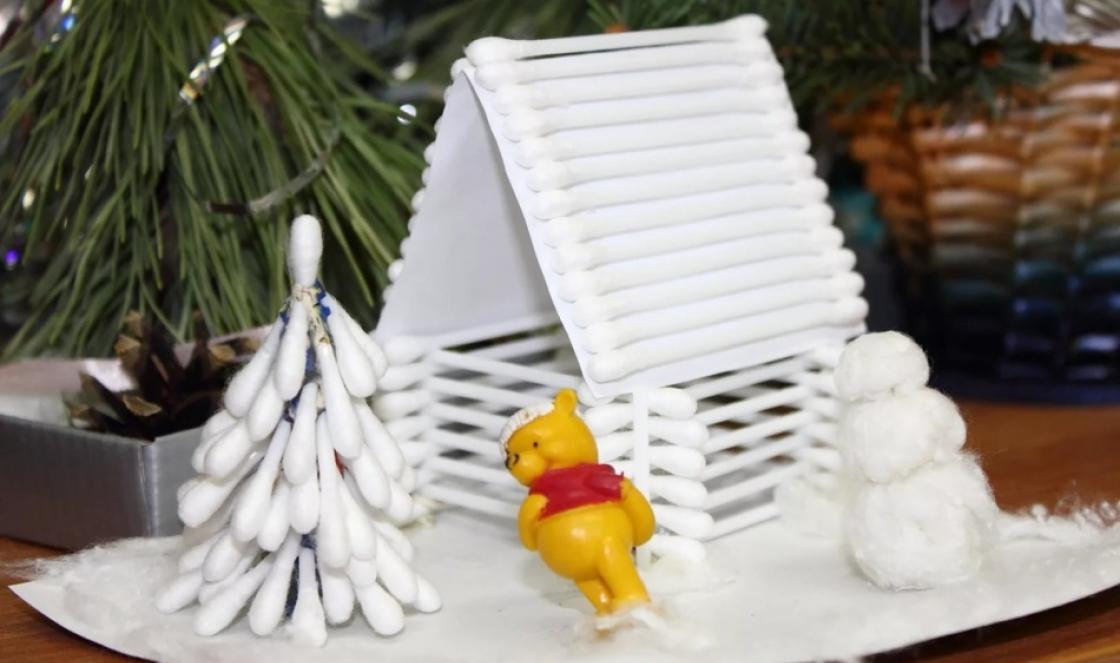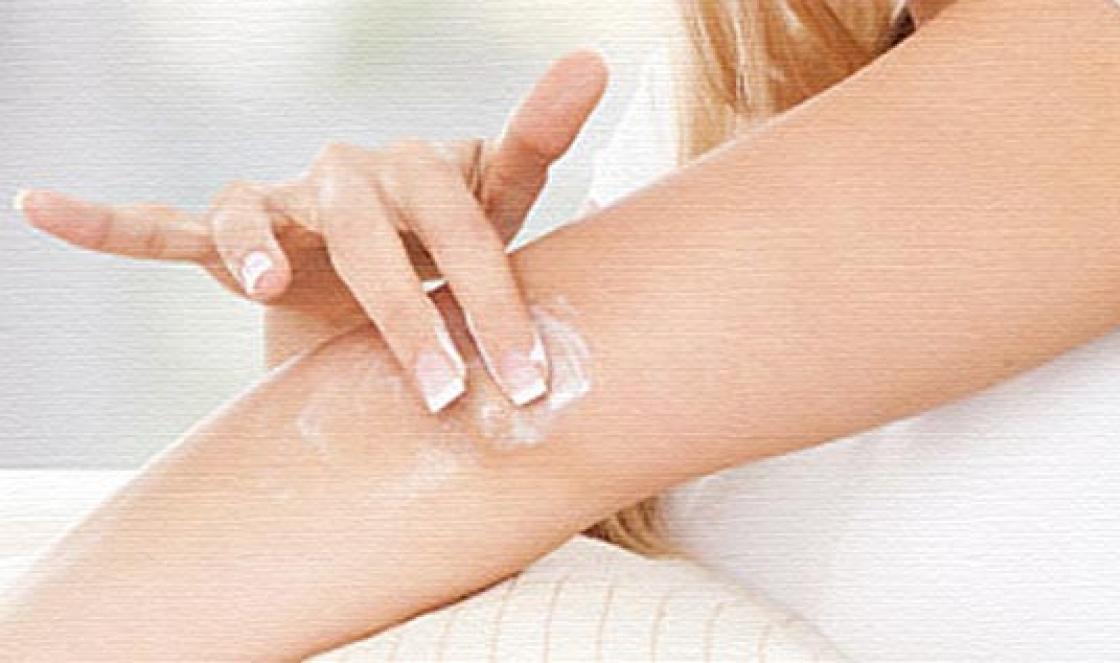Suture festering after cesarean
Childbirth is the long-awaited hours of waiting for the baby to be born. Almost all women want to give birth on their own through the natural birth canal, but for certain indications, surgical birth is carried out by caesarean section on a planned or emergency basis.
IN lately The technique of caesarean section is used in the lower segment according to Pfannenstiel, with a transverse incision in the natural fold above the pubis measuring 15-16 cm. A cosmetic intradermal suture is applied using absorbable threads, mainly vicryl, which does not require the removal of sutures. With the exception of cases with the application of interrupted sutures after lower-median laparotomy, when a longitudinal incision of the anterior abdominal wall is made. Sutures are removed in stationary conditions.
To prevent complications during surgery, after cutting the umbilical cord, one of the broad-spectrum antibiotics is administered. After the operation, they are transferred to the ward intensive care and continue therapy after 12 and 24 hours. If a woman does not belong to a high-risk group for the development of infections and her body temperature is normal, then at this stage antibacterial therapy stop. But if there is a threat of infection of the surgical wound after cesarean section, therapy is continued for up to 5-7 days.
Risk factors for the development of an infectious process are diabetes mellitus and lipid metabolism disorders, chronic infectious diseases history, anemia and toxicosis of pregnant women, a long anhydrous period during childbirth, emergency or long-term surgical intervention, postpartum endometritis and, of course, violation of the sanitary and epidemiological regime.
After the anesthesia wears off, pain appears in the incision area, but in the first days the intensity is reduced by taking painkillers. While in a hospital setting, a doctor monitors the general condition and area of the postoperative wound. Every day the nurse cleans the stitches and changes the bandages.
The postoperative period generally proceeds smoothly, but is often complicated. One of the common complications is suppuration of the postoperative suture.
The infectious process in the wound area usually develops 3-8 days after surgery, but the first symptoms may appear after 12 hours with increased pain on the 2nd day. Most often, the picture of inflammation develops when the anterior abdominal wall is cut.
Infection of a surgical wound is characterized by the presence of both local and general symptoms. The postpartum woman develops weakness, chills, tachycardia, increased sweating, decreased appetite, and a temperature of up to 38.5 degrees. If the suture becomes inflamed after a caesarean section, do not delay going to the doctor. The group of local signs of inflammation includes redness, swelling, soreness of the edges of the wound and the appearance of purulent discharge. IN general analysis blood, the number of leukocytes and ESR increases.
If the tissues of the surgical wound suppurate, the sutures are removed and the wound discharge is ensured, washed antiseptic solutions, and the purulent cavity is drained. Then secondary sutures are applied, but the drainages are left in place. The treatment regimen includes antibiotics, restorative and hydration therapy, and proteolytic enzymes. It is possible to use laser irradiation with the use of antibiotics as a type of local treatment. Thanks to the timely and effective treatment can be achieved positive results. But, unfortunately, peritonitis remains a common complication.
If the postpartum period passes without complications, then with satisfactory general condition The postpartum mother is discharged home with the baby on days 7-9 and given recommendations on how to care for the postoperative scar.
At home, after discharge, you can take a shower, and after a week, use a washcloth. After a shower, you need to wipe dry and treat with a 3% hydrogen peroxide solution, then apply the well-known brilliant green solution to everyone. It is better to use sterile self-adhesive dressings, for example, “Leoped” for greater convenience. It’s worth remembering right away what you can and can’t do to treat a suture after a caesarean section.
Immediately after discharge, you will be visited by your local gynecologist within the first three days. During the survey and examination, in addition to the size of the uterus, discharge from the genital tract, and body temperature, considerable importance is attached to the examination of the scar. Often, if personal hygiene is not observed, slight redness and soreness in the suture area may bother you. A specialist will definitely examine and prescribe local treatment. After treatment with solutions, it is recommended to use ointments applied to the area of inflammation. The ointment “Levomekol” and its analogues, which have anti-inflammatory and regenerating effects, are widely known.
Therefore, the most important thing is to follow the rules of personal hygiene and remember all the recommendations, and if signs of infection appear, immediately contact your doctor.
How long does it take for a suture to heal after surgery?
It is very difficult to answer exactly the question of how long it takes for a suture to heal after surgery. Wound healing, in addition to the general resistance of the body and the condition of the skin, is influenced by a significant number of factors.
How long do stitches take to heal after childbirth?
During childbirth, there are situations when a woman in labor is given stitches for ruptures of the cervix and perineum, as well as after an incision of the perineum, and this is currently quite common.
How to remove stitches
Surgical sutures are the most common way to connect biological tissues (wound edges, organ walls, etc.), stop bleeding, bile leakage, etc. using suture material. Skin sutures are most often removed 6-9 days after their application, however, the timing of removal may vary depending on the location and nature of the wound.
How to treat a suture after a caesarean section
Caesarean section is abdominal surgery(laparotomy), in which the skin, subcutaneous tissue, muscles, peritoneum and uterus are cut to remove the baby. Caesarean section is performed if there is a risk possible consequences with independent childbirth, the risk of surgery exceeds. It is performed strictly according to indications and can be planned or urgent (urgent).
In this article:
One of the common complications of artificial delivery is the development of inflammation, when the suture after a cesarean section festeres, and a cloudy yellow-white liquid is released from the wound. In addition to this, a young mother is often bothered by other symptoms: high temperature, chills, health deteriorates, and attempts to move and pick up the child cause severe pain.
When a woman realizes that the suture after a cesarean section has begun to fester, many questions arise in her head: what to do in such a situation, where to go for help, how is treatment carried out if such a complication occurs? You will find the answers in our article.
Types of seams
The decision about what will be carried out can be made in advance, but sometimes it happens emergency situations when urgent surgical intervention is required. This affects how the incision will be made, because when there is a threat to the life of the mother or child, the issue of preserving the beauty of the female body is not in the first place.
Types of seams:
- Vertical seam – an incision in the abdominal wall is made from the navel to the pubic area along the midline of the abdomen. It is rarely performed, because after it heals, a large, unattractive scar remains. There are certain indications for performing vertical tissue dissection, which, if assistance is not provided in a timely manner, can lead to fatal outcome. Among the reasons for performing such an incision are acute hypoxia of the child, as well as massive blood loss.
- Horizontal seam – dissection of the skin and soft tissues is carried out along the natural fold separating the abdomen and the pubic area. This type of access to the uterus is called Pfannenstiel laparotomy, in which abdominal cavity does not open. After removing the child and applying cosmetic stitches, after healing of which a thin, unnoticeable mark remains.
- Internal seams – the course of subsequent pregnancy depends on how well the uterus is sutured. With a vertical approach, a transverse incision of the uterus is made; when a Pfannenstiel operation is performed, a longitudinal incision is made.
After a cesarean section, careful treatment of the wound is required so that it does not begin to fester. Following the doctor's recommendations will ensure complete healing of the incision.
Proper care
While the woman is in the postpartum ward, daily treatment postoperative wounds performed by nurses. Before being discharged home, the obstetrician-gynecologist will tell you about proper care, how to behave when the suture festers after a cesarean section, as well as what to do if complications arise.
During the week after birth, the wound is lubricated with antiseptic solutions, usually brilliant green, and the bandages are changed. Simple actions help prevent situations where the suture festers after a caesarean section.
After 7-10 days, the sutures should be removed, but if they are made of absorbable materials, such manipulation will not be required.

If, after being discharged home, you find white discharge from the wound, this may indicate that the suture after a cesarean section is festering, so the first thing you need to do is consult a gynecologist.
Why does the seam fester?
The most common reasons leading to the fact that the suture has festered after a cesarean section:
- wound infection;
- rejection reaction developing to suture material;
- failure to care for the incision site;
- injury.
The decision on what to do if the suture festers after a cesarean section is made by the doctor after an external examination, gynecological examination, and the results of ultrasound diagnostics. Treatment methods depend on the complexity of the inflammatory process, as well as the reasons why the suture may fester after a cesarean section. In some situations, suture removal and surgical debridement are required.
Signs of inflammation
When a suture has festered after a caesarean section, self-medicating or making assumptions that the disease will go away on its own is strictly prohibited, because such an attitude towards one’s own health can lead to negative consequences: development of sepsis, inflammation of the uterus and other pathological conditions.
If after a cesarean section the suture festers, then the woman may have symptoms such as:
- burning pain in the area of the postoperative wound;
- redness of the skin around the stitch;
- the incision site begins to get wet;
- dirty white discharge appears from the wound;
- hyperthermia develops;
- general well-being is disturbed.
If you find signs that the suture after a cesarean section is festering, immediately contact medical care, rather than looking for advice from relatives or on forums on the Internet on what to do in this case.
Healing agents
Sometimes young mothers come to doctors and ask: “What should I do if my suture is festering after a caesarean section?” To prevent such a complication, it is necessary to follow the doctor’s recommendations during the recovery period.

After the wound has healed, you can use various drugs that help accelerate the production of collagen and epithelization of the wound surface:
- Contratubeks.
- Betadine.
- Actovegin.
- Solcoseryl.
- Dilaton gel.
- Dimexide.
- Derimax Ultra.
But their use should be stopped if signs of suppuration appear.
If inflammation has begun, treatment depends on the clinical symptoms; in severe cases, it is necessary to drain the wound, remove exudate from it, if the suture festers after a caesarean section. It is also impossible to do without treatment with antibiotics, because purulent inflammation is caused by bacteria.
Be sure to tell your doctor if you are breastfeeding so that the doctor can prescribe you medications that are approved for breastfeeding.
Seam correction
What to do if the cesarean section suture festers? Indeed, quite often after such complications the scar becomes deformed and becomes more pronounced. In such cases, seam correction will help correct the unaesthetic appearance.
For some women, the scar after a cesarean section becomes barely noticeable after a year, but some mothers suffer from an unsightly mark in the lower abdomen, which does not allow them to wear an open swimsuit and feel attractive. Aesthetic surgery can help solve the problem.
In specialized clinics it is carried out laser resurfacing stitches, which removes a thin layer of scar tissue, leaving the skin looking renewed and smooth. Sometimes chemical peeling is recommended. Before carrying out the procedure, it is better to consult a doctor about when it is best to perform it.
No young mother is immune from development, regardless of how they went through it. If you notice suspicious signs, as well as discharge from a wound, be sure to consult a gynecologist. After the examination, he will determine exactly what needs to be done if the suture festers after a caesarean section.
Useful video about stitches after caesarean section
After the operation, you will be observed by a doctor and he will answer all your questions about the treatment and care of the suture, and you will learn how to treat the suture after a cesarean section. But still, there are rules that the mother herself should know if she has to have a cesarean section. First of all, it should be noted that inspection and treatment of the seam by a specialist should occur every day. For approximately 6-7 days (the period while you are in the maternity hospital), the nurse on duty will treat your stitch every day with an antiseptic (for example, brilliant green) and change the bandage.
Before discharge, the sutures are removed. Even if you were given absorbable sutures, which are now very often used in gynecology, they are still removed, since they disappear completely on their own approximately 2 months after the operation.
How long does it take for a suture to heal after a cesarean section: why do women often panic?
It takes about a week for the skin scar to form, after which time you can safely take a shower. But, of course, you should be careful with the seam, as it is still very vulnerable. A cesarean section is a fairly serious surgical procedure, and the mother should understand this. The sutures heal approximately 2-3 months after surgery. But do not forget that everything is individual, and depends on the postpartum well-being of the mother and the course of the operation.
What to do if the suture festers after a caesarean section
Many mothers after surgery are concerned that they observe the release of fluid or pus at the site where the stitches are placed. This is a normal and common occurrence for the first few days. But when the stitches are removed, there should be no discharge. So, if you notice that the suture is oozing after a cesarean section, and you have already been discharged from the hospital, contact your doctor immediately. He will examine you and give you recommendations on how you should behave further and how to care for the seam.
It is worth noting that faster healing The suture is facilitated by wearing a special postoperative bandage. Your doctor will also tell you how to choose the right bandage.
Moms are concerned about the fact that in the first months after surgery, doctors prohibit lifting weights of more than 2 kg. It is certainly difficult for a mother not to hold her baby in her arms. Therefore, doctors advise, depending on the progress of the operation, to hold out for at least the first week. And then do not lift anything heavier than a child, and also very carefully, and under the supervision of the attending physician. Take care of your health, because the baby needs a healthy mother.





